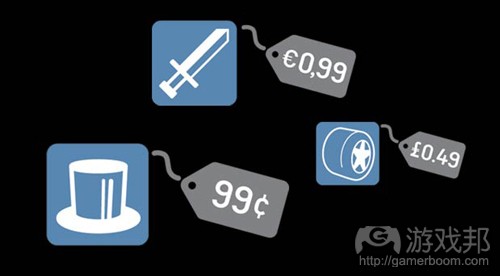简述游戏微交易设计中的6大盈利规则
游戏产业咨询师Ramin Shokrizade根据自己对玩家游戏行为的观察而明确了一些盈利设计的相关规则。
微交易以及“为了胜利而付钱”的问题深深困扰着游戏设计师和玩家。前者导致游戏设计师不知如何在游戏中设置合适的盈利元素,而后者这种商业模式却总让人难以接受。
作为游戏产业咨询师,Shokrizade为盈利机制的应用撰写了一些简单的规则——但是如果你认为“商品至高无上”或能够带给特定玩家不容置疑的优势时,这种规则将会彻底摧毁整款游戏,不利于盈利机制的有效实施。在此我们将简述他所提到的一些简单的规则:
不要让玩家无限次地使用微交易。如果你允许玩家反复购买加速50%的道具,他们便有可能连续购买40个boost。而这就像哥斯拉(游戏邦注:日本人所创造的怪兽电影系列中的主角)践踏东京一样可怕。
尽量确保价格菜单的简单性,让初学者也能够一目了然。而如果你的兴趣是阅读《大英百科全书》,我想我们所提供的任何一款游戏都不可能让你感到愉悦。
使用多种零售价,但是确保你所提供的选择始终维持在一定的数量内。如果浏览游戏商店中的所有商品需要我花费2天时间,我一定会郁闷死的。这是游戏啊,可不是西尔斯(游戏邦注:美国,也是世界上最大的私人零售企业)的商品目录。
让玩家通过自己的努力去挣得游戏内容。没有人希望看到一个新玩家能够使用自己花了6个多月时间才挣得的游戏道具。同样的,如果玩家能够先通过自己的努力去争取某些道具再掏腰包(而不是一开始便花钱消费),他们便会觉得自己更有威望。所以开发者最好能够让玩家在购买商品前先自己努力看看。
久而久之大多数虚拟商品的价值将发生改变。有些商品将会贬值,但是也有些商品却不会。而为何会出现这种情况是一个非常复杂的问题,提供分析服务的应用并不能为你提供这个问题的答案。
推动微交易模式游戏化——只有专家能够使用。将微交易当成是一种策略性决策。你可以限制玩家购买商品的频率,或赋予每个加速道具一定的缺点。但是这个规则相对复杂些,所以你最好在履行了前面5个规则后再来考虑这一点。
(本文为游戏邦/gamerboom.com编译,拒绝任何不保留版权的转载,如需转载请联系:游戏邦)
The new rules of monetization
By Gamasutra Staff
As part of Gamasutra’s latest feature, consultant Ramin Shokrizade pens some rules of monetization design — based on his observations about the way players really act in games.
Microtransactions and the “pay to win” problem have caused headaches for game designers and players alike. The former have misstepped in how they introduce monetization elements in their games; the latter can feel alienated by the business model.
Shokrizade, a game industry consultant, writes that there are simple rules for applying monetization — ones that make sense when you realize that “supremacy goods,” or items which confer unassailable advantages on certain players, simply ruin the game and cause a downward spiral for monetization. He details this concept in his feature, but here, we’ve extracted his simple rules:
Don’t allow microtransactions to be stacked an unlimited number of times. If you let someone buy a 50 percent boost an unlimited number of times, and they buy 40 of them, it will be like Godzilla stomping on Tokyo…
Make your price menu so simple that a novice will understand it the first time they read it. If reading the Encyclopedia Britannica is fun for you, you are so self-entertained that there is no game we can provide you that will make your life even better.
Allow multiple price points, but keep the number of choices a single digit at all times. If my eyes start bleeding and it takes me two days to read all the items in your premium store, I’m gonna make Santa put coal in your stockings. Remember, it’s a game, not a Sears catalog.
Make them earn it (I also call this “play to pay”). No one wants to see a new player walking around with something it took you six months to earn. By the same token, a person will feel more prestige having something earned and paid for, rather than just paid for. Make them earn the item before you let them buy it.
Most virtual goods change in value over time. Most goods drop in value over time; some don’t. How this works is a bit complex, and analytics apps don’t know how this works any better than you do. I will give an example in the next section.
Experts only – Gamify your microtransaction model. Make a microtransaction purchase a strategic decision. You can do this by limiting how often or when players can purchase one, or better yet give every boost some disadvantage along with it. This is more difficult. Make sure you are comfortable with the first five rules before trying this one.
The full feature, in which Shokrizade explains precisely how supremacy goods warp game designs — and analyzes three free-to-play games, including League of Legends, to illustrate good and bad monetization models — is live now on Gamasutra.(source:GAMASUTRA)









































